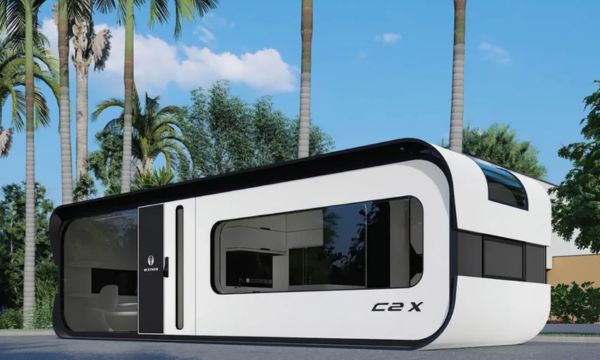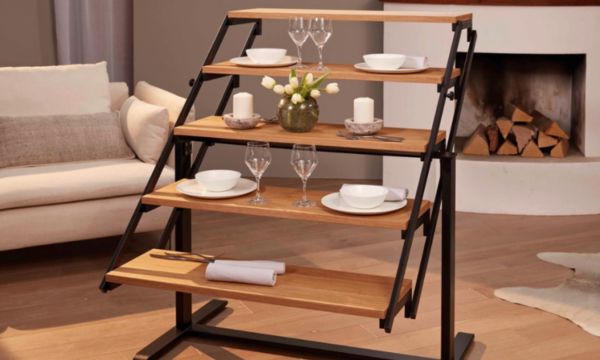Exploring the Charm of Tiny House Unique Roofs
In recent years, the tiny house trend has taken the world by storm. As more and more people try to simplify their lives and reduce their carbon footprint, tiny houses have become a popular choice for people looking to relocate and live a simpler life. One of the most interesting things about these tiny houses is that they have different roofs, which not only adds to their charm, but also has many useful features. In this article, we take a look at some of the funniest tiny house roof ideas that have caught the attention of homeowners and designers alike.
1. Roof With Plants:
Green roofs, also known as ‘living roofs’, are an environmentally friendly and beautiful addition to tiny houses. Vegetation grows on these roofs, which not only insulate but also help purify the air and provide food for the local wildlife. The greenery on top of the tiny house blends in with the surrounding nature, making it an excellent choice for people who care about the environment. Imagine waking up to grass and plants growing all around you.
2. Curved Roof:
A curved roof gives the tiny house a touch of style and modernity. Unlike traditional flat roofs, the curved shape gives the roof a distinctive look and can even make it stronger overall. These roofs not only look good, but also help with drainage, reducing the risk of leaks and water damage. Curved roofs can be made from metal, wood or even eco-friendly composites, giving homeowners a variety of options to suit their tastes.
See Too:
3. Glass Roof:
A glass roof is a great option for those who want to bring the outdoors in. These see-through or see-through roofs allow plenty of natural light into small homes, making small spaces feel more open and airy. The glass roof also makes stargazing from your bed a wonderful experience. Homeowners can opt for tinted or UV-resistant glass to control indoor temperatures and block excess heat.
4. Hobbit Style Roof:
Fans of small houses are increasingly interested in hobbit-style roofs, inspired by the strange houses in Tolkien’s Middle-earth. These semi-circular grass roofs create a cozy and magical atmosphere, perfect for those who want to live in a fairy tale. Hobbit-style roofs are often made from eco-friendly materials such as straw, making them perfect for the tiny house movement.
5. Folding Roof:
Tiny houses with retractable roofs are a great way to make the most of your room. These roofs can be folded down or retracted when more space is needed. When the roof is down, it can be used as an upper deck or roof terrace, giving you a place to relax and enjoy the outdoors. For people who live in small houses and find it important to change their mind, retractable roofs are a smart choice.
Conclusion
Tiny houses are cute not only because they are small and simple, but also because their roofs are so creative and cleverly made. From living roofs that blend in with nature to roofs that fold away to save space, each design choice gives these tiny houses their own personality. Whether you want to live in a tiny house or are just interested in architecture, learning about tiny house roofs is sure to spark your creativity and get you excited about living green. Enjoy the beauty of these different rooftops and join the simpler, greener, more satisfying lifestyles.
Frequently Asked Questions
1. What is unique about the roof of the tiny house?
Tiny House Unique Roof is an unconventional and creative roof design specially designed for tiny houses. These roofs serve not only aesthetic purposes but also functional purposes such as improving insulation, promoting sustainability and maximizing space.
2. How does the tiny house living roof work?
Living roofs, also known as green roofs, are covered with vegetation to help insulate the tiny house. They absorb rainwater, reduce heat gain and promote air purification. The residential roof blends seamlessly with the environment, forming an environmentally friendly and visually appealing element for small dwellings.
3. Is the curved roof structure of the small house firm?
Yes, the curved roof of this tiny house is structurally sound and provides extra stability. The curved design helps water flow away, preventing leaks and potential water damage. These roofs can be made from a variety of materials such as wood, metal or environmentally friendly composites, making them functional as well as beautiful.
4. Are glass roofs suitable for all climates?
Glass roofs can be adapted to different climates, depending on the type of glass used and how well the tiny house is insulated. In cooler regions, thermal or insulating glass can help maintain indoor temperatures, while in warmer climates, tinted or UV-resistant glass can prevent excessive heat build-up. Good thermal insulation and climate-friendly glazing are important considerations.
5. How is a hobbit-style roof eco-friendly?
Hobbit-style roofs often use sustainable materials like straw or thatch, making them an environmentally friendly choice. These roofs blend into the natural landscape and require fewer resources during construction. The use of organic materials also promotes biodegradability and reduces the overall impact on the environment.
 Unlocking the Marvels of Tiny House Hidden Technology
Unlocking the Marvels of Tiny House Hidden Technology
Ad In recent years, the tiny house movement has taken the world by storm. These small, minimalist […]
More The Rise of Tiny House Smart Home Automation
The Rise of Tiny House Smart Home Automation
Ad The tiny house movement has become increasingly popular in recent years as people look for a […]
More Discover the Magic of Tiny House Convertible Furniture
Discover the Magic of Tiny House Convertible Furniture
Ad Welcome to the world of tiny houses and the ingenious magic of convertible furniture! The tiny […]
More